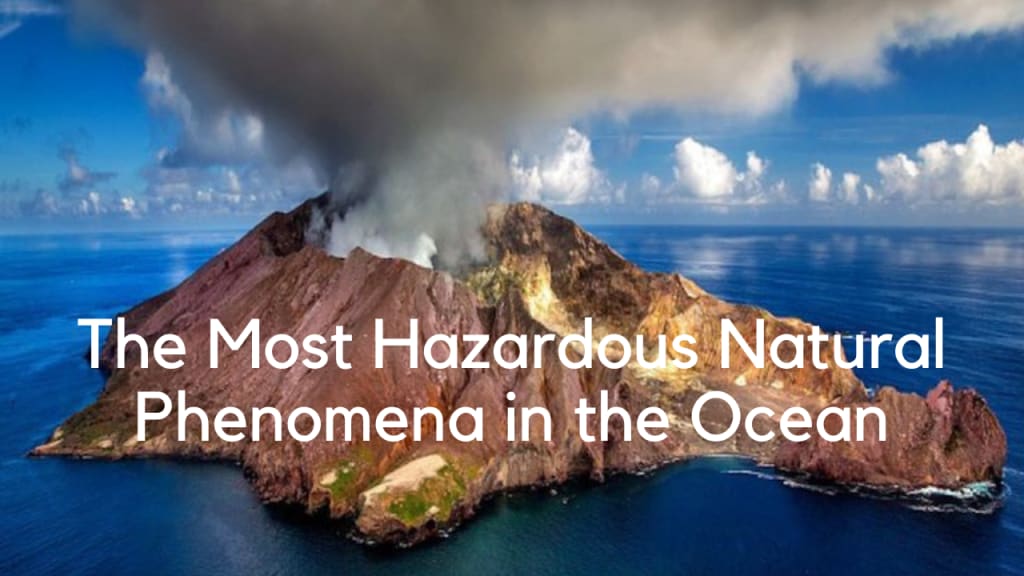The Most Hazardous Natural Phenomena in the Ocean
The Most Hazardous Natural Phenomena in the Ocean

The Most Hazardous Natural Phenomena in the Ocean
The ocean is home to various natural phenomena that can be hazardous. In 2011, a diving team discovered an enigmatic object in the northern Baltic Sea that puzzled many. While some speculated that it might be a sunken extraterrestrial craft due to its metal composition indicating an unnatural origin, scientists now entertain the possibility that this artifact dates back to the Ice Age or might even be a relic of a meteorite trapped beneath ice.
Maelstroms, powerful whirlpools, can sink smaller crafts with massive waves created by the collision of currents. Underwater vortices, similar to black holes, can evolve from these whirlpools. However, unlike their cosmic counterparts, underwater black holes are nearly imperceptible even to experts due to their immense size.
The ocean also holds its own optical marvel known as the Green Flash, a fleeting phenomenon that occurs just after sunset or before sunrise. This phenomenon causes the upper rim of the sun to remain visible above the horizon while the rest has dipped below, taking on a momentary green hue due to atmospheric refraction.
Red tides, caused by an overabundance of certain microscopic algae, can transform ocean waters into a crimson hue and unleash toxins harmful to marine life and humans, especially those with respiratory sensitivities. The wind can push these harmful algal masses towards the shoreline, making it crucial to avoid affected areas, as they can cause significant ecological and health problems.
Submarine volcanoes, whether erupting or dormant, can create hazards such as pockets of bubbles, reducing water density and potentially causing ships to lose buoyancy. In shallower waters, eruptions may lead to underwater volcanic debris, forming islands and impacting marine environments.
Cross seas, a rare phenomenon characterized by square wave patterns, can be both beautiful and dangerous. These waves result from the interaction of two obliquely traveling wave patterns and can pose risks for swimmers and boaters due to unpredictable and tall wave formations, which can reach heights of almost 10 feet, also known as "white walls."
Seafoam, a natural occurrence resulting from the agitation of seawater, contains small particles and organic matter. Although often harmless, seafoam created by algal blooms can release toxins into the air, causing discomfort or health issues. The formation of seafoam can serve as an indicator of ecological changes and potential hazards in marine environments.
Tidal bores are powerful tidal surges that move against the current of a river, pushing upstream. These surges can significantly increase the depth of a river, potentially leading to flooding. Observing tidal bores can be hazardous due to their unpredictability and potential to create dangerous currents and water conditions.
Lightning is a formidable natural phenomenon that can pose serious risks to human safety. Recognizing warning signs such as increased sweating, tingling sensations, and metallic tastes can aid in responding to an imminent lightning threat. The smell of ozone, produced by electrical charges splitting atmospheric molecules, can also indicate lightning's proximity.
Tornadoes are destructive rotating columns of air that bring devastation in their wake. When facing an approaching tornado, finding shelter away from windows is essential. In outdoor scenarios, lying in a ditch is preferable to lying flat on the ground, which could be conductive.
Tsunamis are colossal ocean waves triggered by underwater disturbances that require immediate action to reach higher ground. While tsunamis are commonly depicted as crashing waves, they can also manifest as rapidly rising tides, characterized by disturbed waters and the retreat of the ocean.
Earthquakes are seismic events resulting from the shifting of tectonic plates and often have recognizable precursors. These include changes in animal behavior, atmospheric anomalies, and unusual behavior in aquatic environments. Volcanic activity is a dynamic geological process with significant consequences for the planet's atmosphere, land formation, and even the origins of life. Volcanic eruptions release gases that shape our atmosphere and provide essential conditions for life. Volcanic soil is fertile and supports agriculture, while geothermal energy and mineral resources offer practical benefits to society.
About the Creator
Enjoyed the story? Support the Creator.
Subscribe for free to receive all their stories in your feed. You could also pledge your support or give them a one-off tip, letting them know you appreciate their work.





Comments
There are no comments for this story
Be the first to respond and start the conversation.